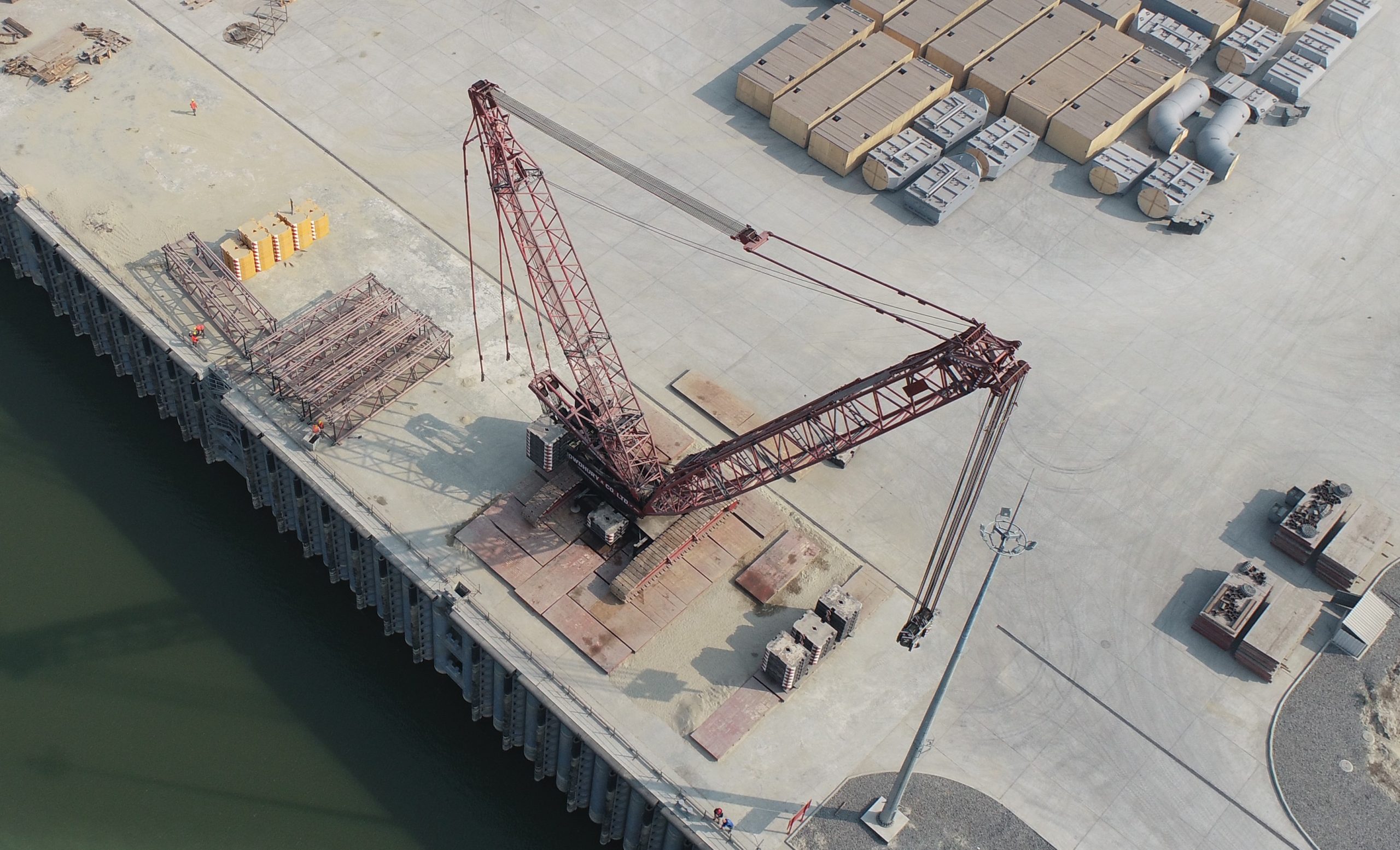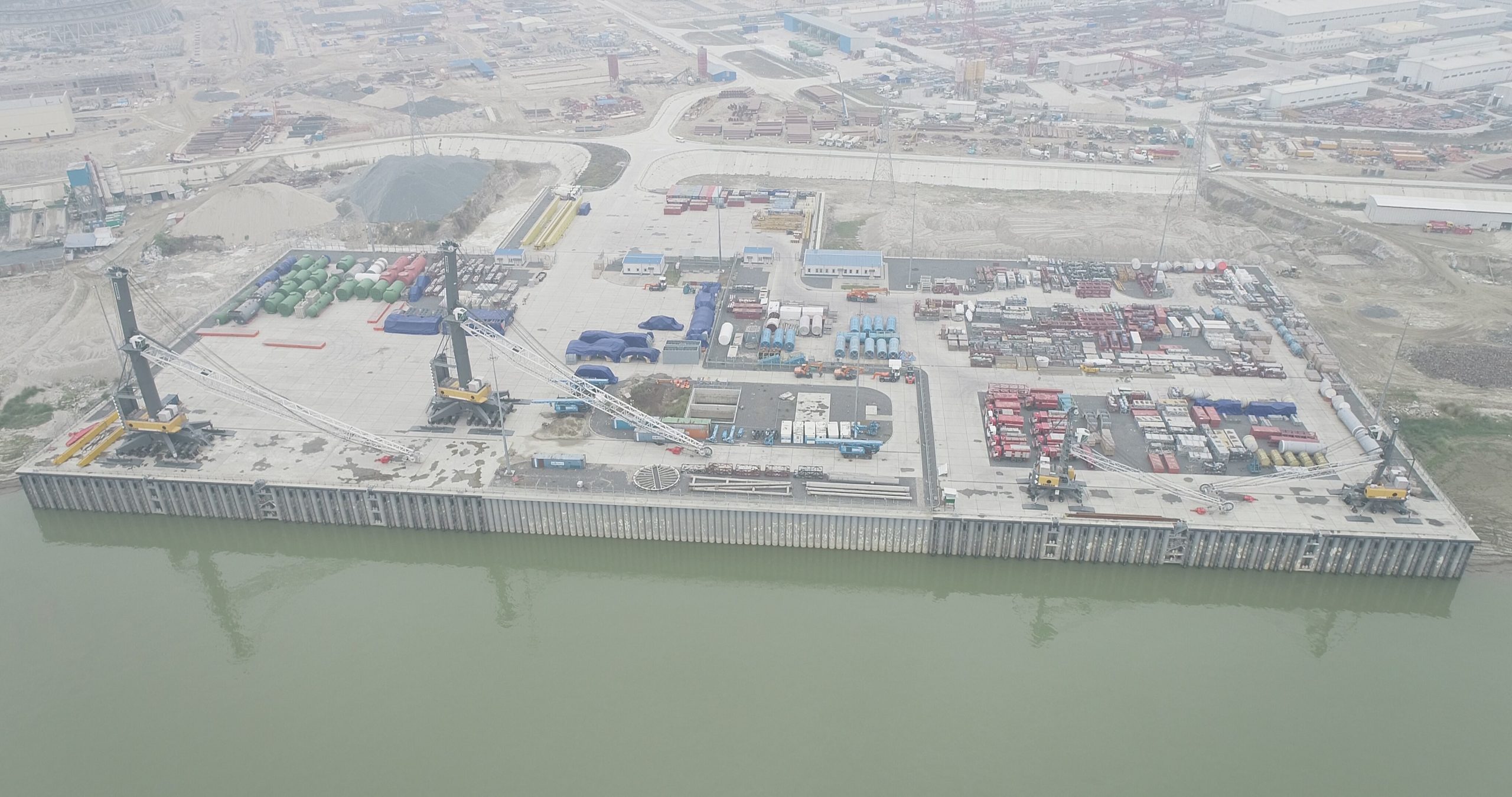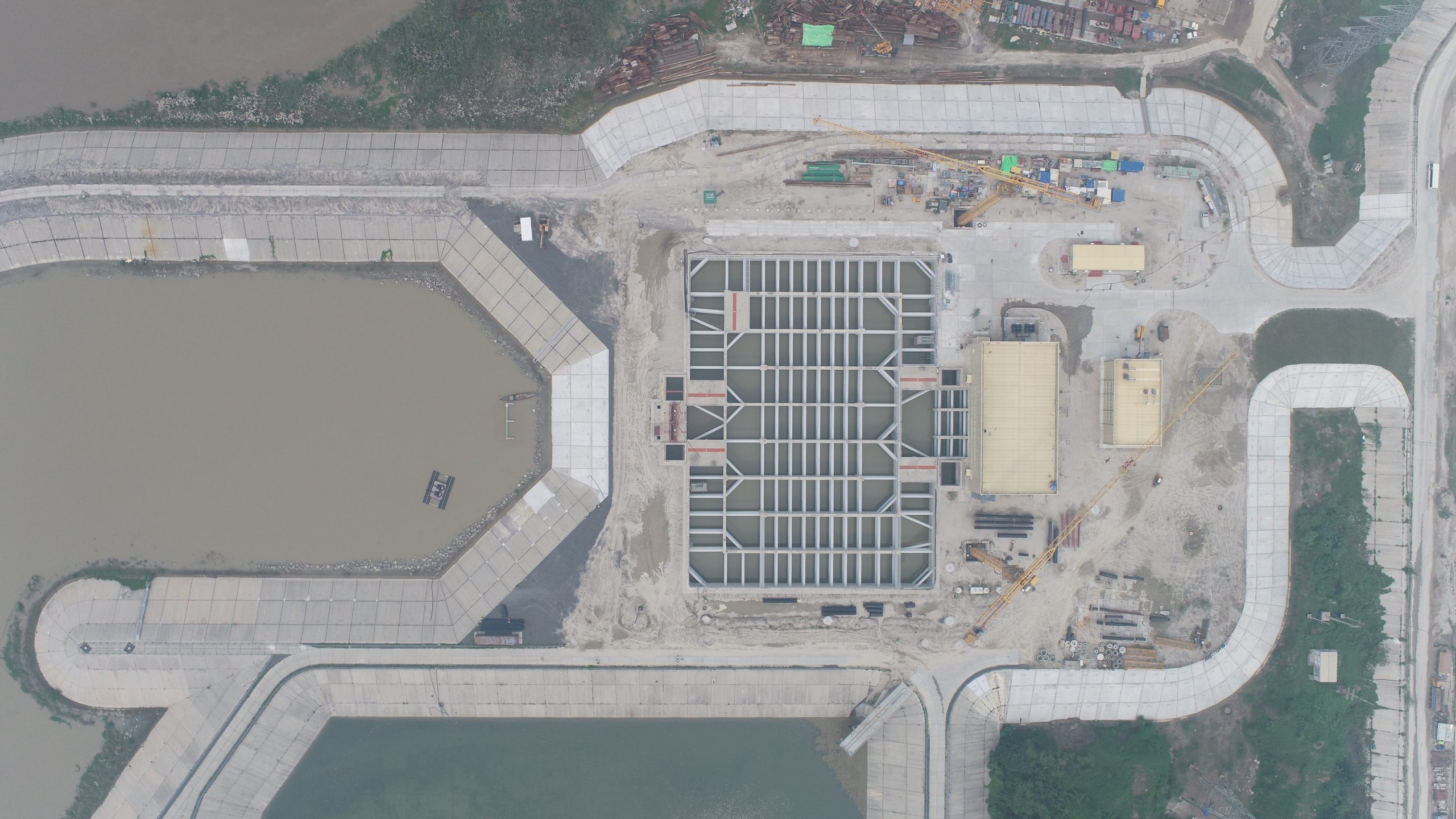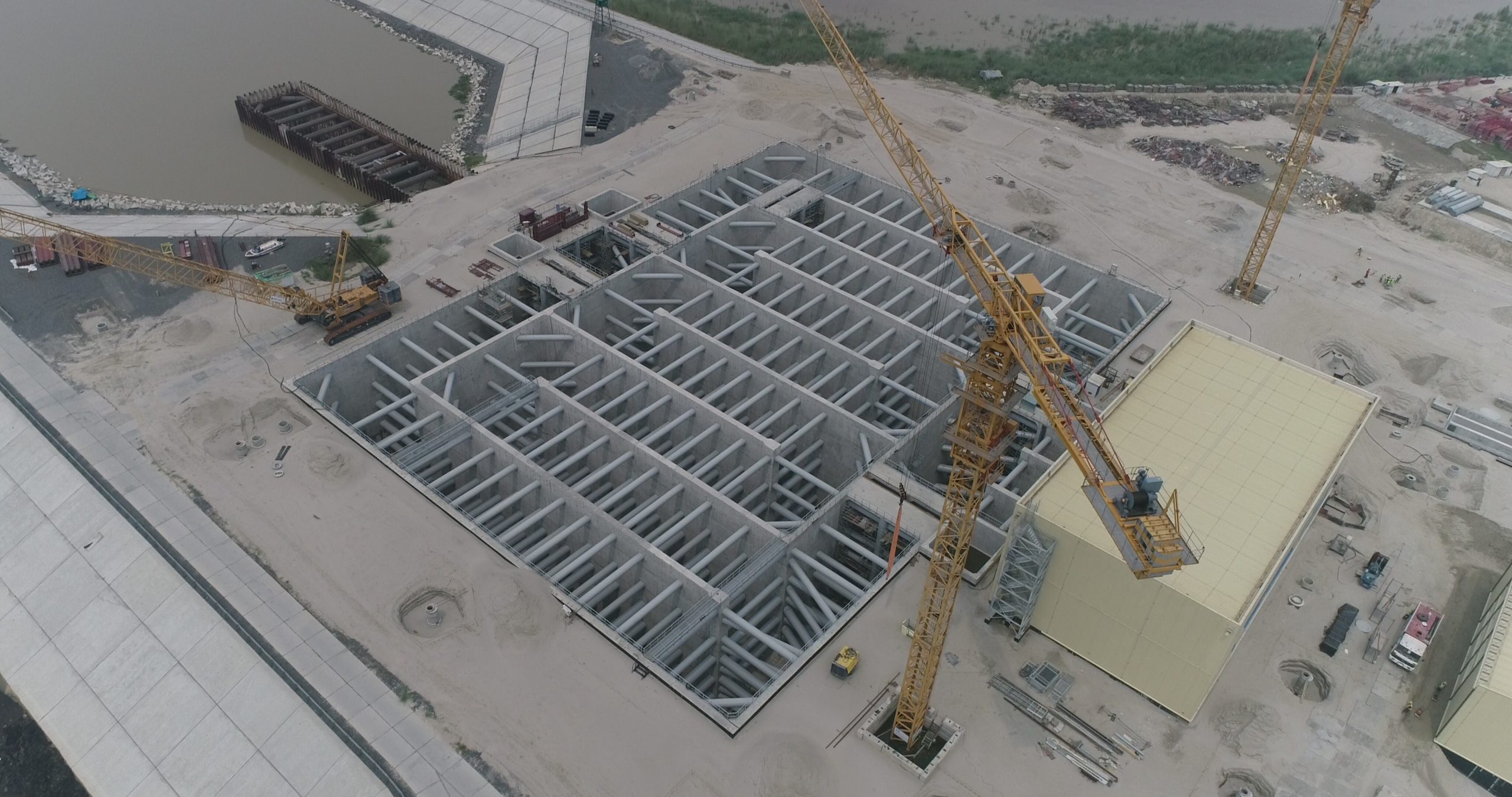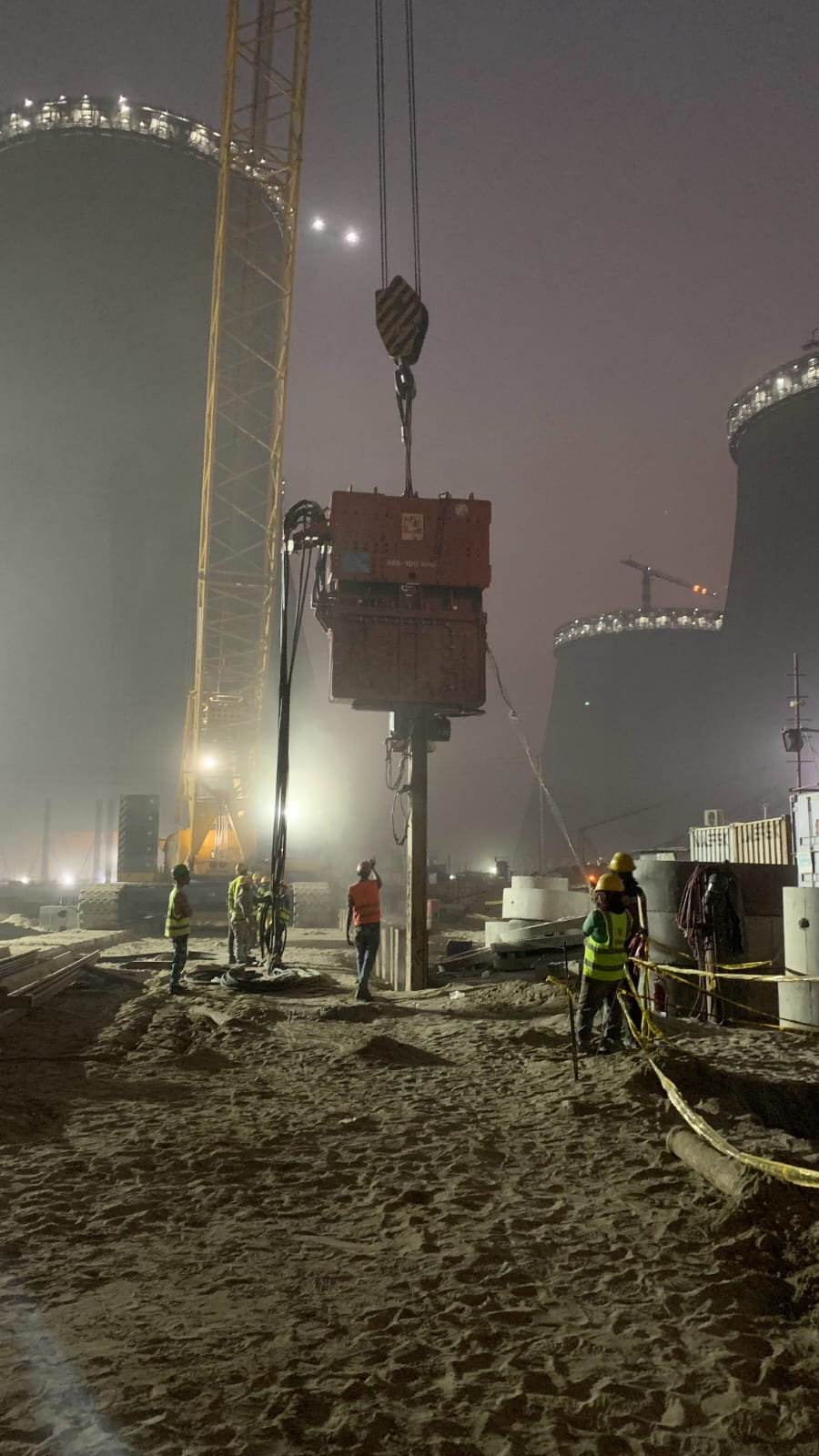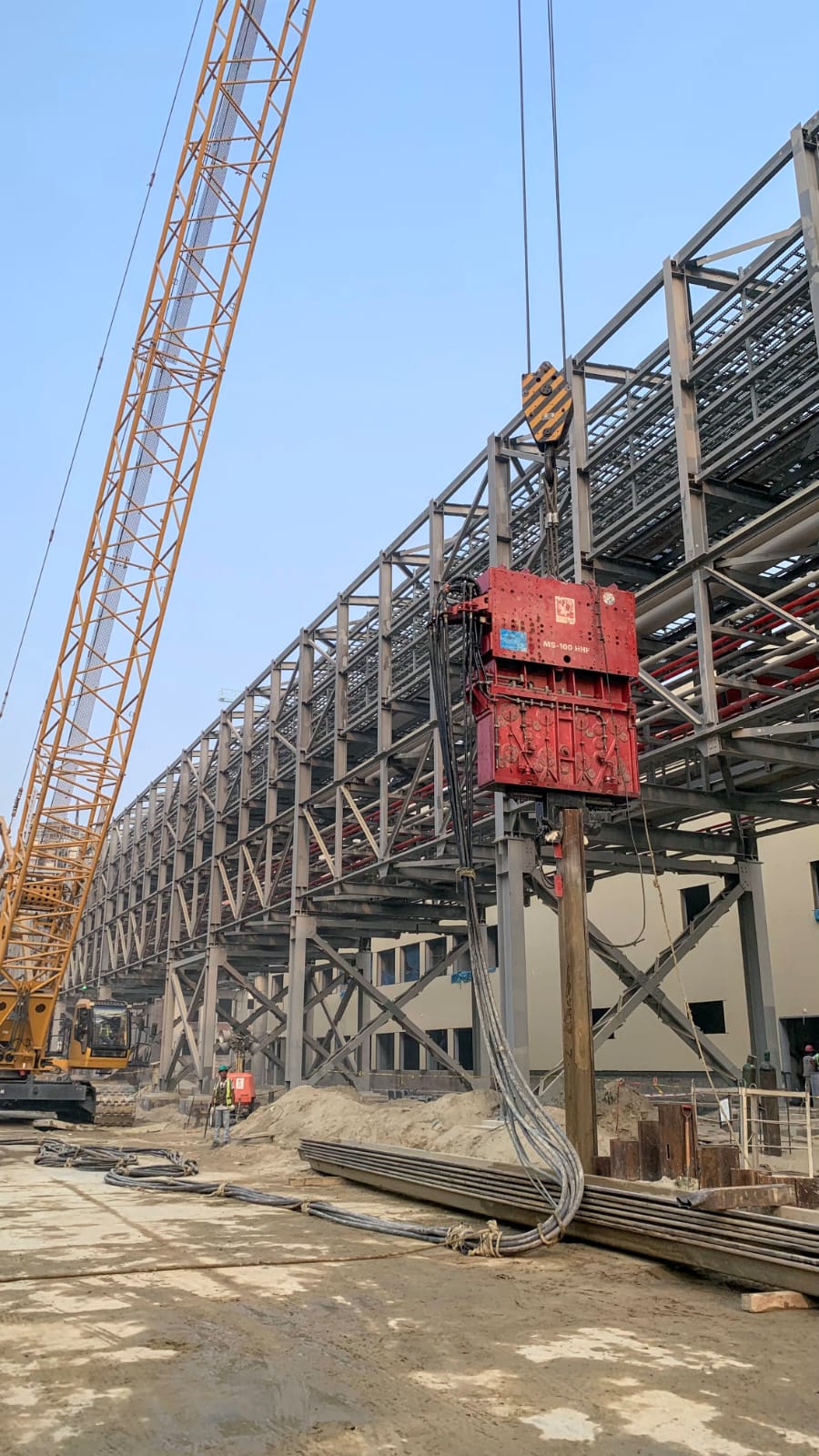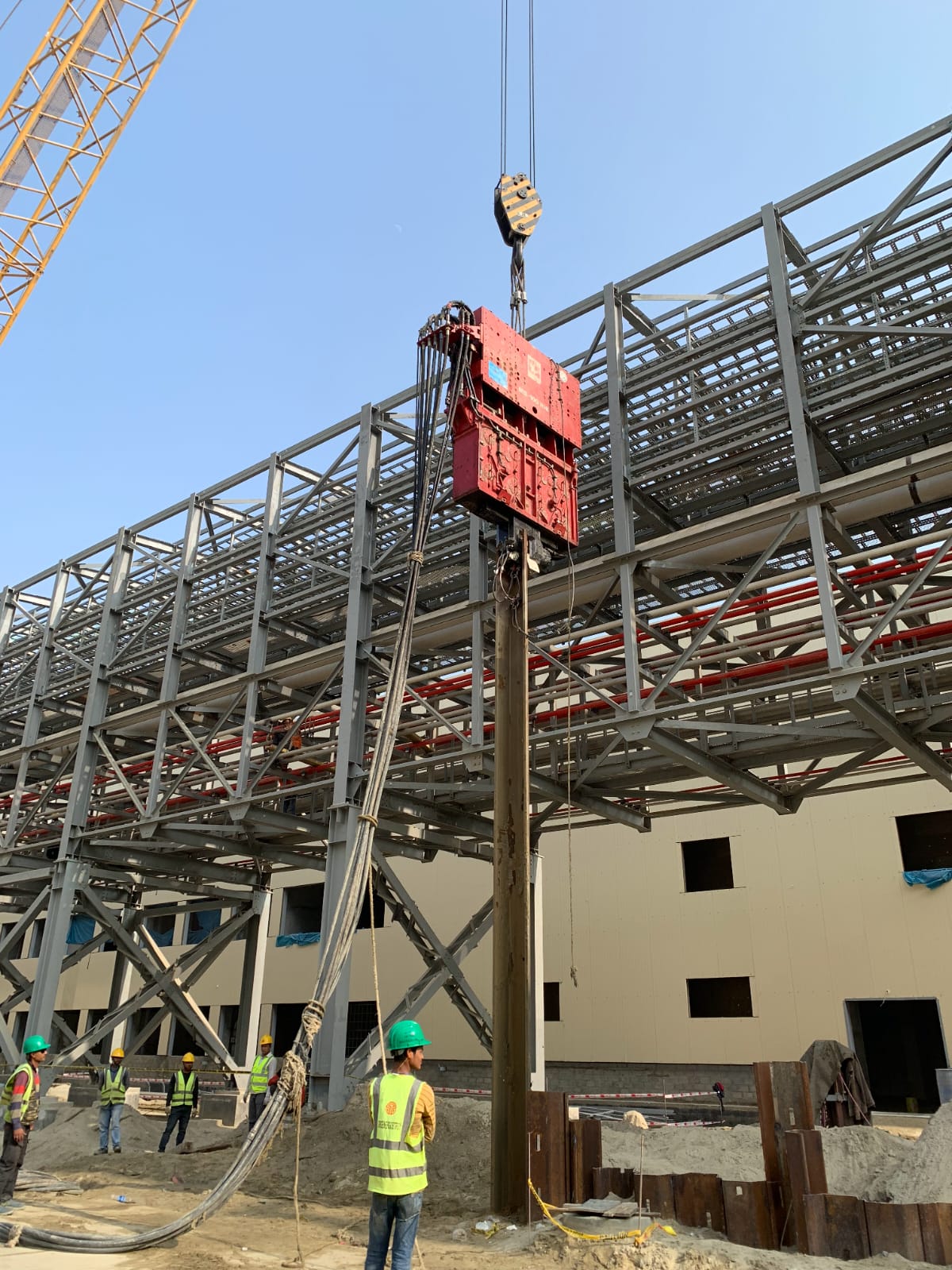Cargo terminal on the Padma River
Cargo terminal on the Padma River(2018-21)
The Cargo Terminal on the Padma River is a critical infrastructure designed for cargo delivery during the peak construction phase of the Rooppur NPP. The site is engineered to remain unaffected by fluctuations in groundwater and river levels. Key features include:
Semi-slope bank protection with surface water flow storage and a wastewater treatment plant
Berths for general and bulk cargo with outdoor storage, connected by a cargo terminal road and checkpoint
Dredging and riverbed clearing for smooth navigation
Seasonal changes in the Padma River required hydrological monitoring and riverbed reinforcement for stability and efficiency.
The port is equipped with two 63-ton cranes and two Liebherr cranes, each with a 308-ton capacity, enabling 24/7 acceptance of vessels carrying reactor equipment, regardless of the season or river level.
Feed Pump Station Complex(2019-23)
Vertical Leveling & Temporary Bank Protection
Feed Pump Station & Filter Chamber
Water Intake Structure & Temporary Buildings and Structures
The pumping station complex supplies water to the NPP for technical needs. River water flows through a channel to a clarifier with a 600-meter maze to remove silt and suspension. It is then pumped to the filter chamber with reagents, flows through seven systems for cooling, and accumulates silt and suspension in a dedicated sludge reception pool.
The cooling system of responsible consumers is critical for ensuring the safe and stable operation of NPPs. Silt and impurities are collected in a dedicated sludge pool.
Sheet Pile Embankment Project(2022-23)
Completion of steel sheet pile embankment preparation and delivery of materials
Installation of sheet piles for foundation pits, supporting water supply and sewer networks
Construction of 8m high shore protection dam with reinforced concrete tetrahedra and geotextile-encased stones
Use of highly qualified industrial divers and European-standard construction equipment for hydrotechnical processes



